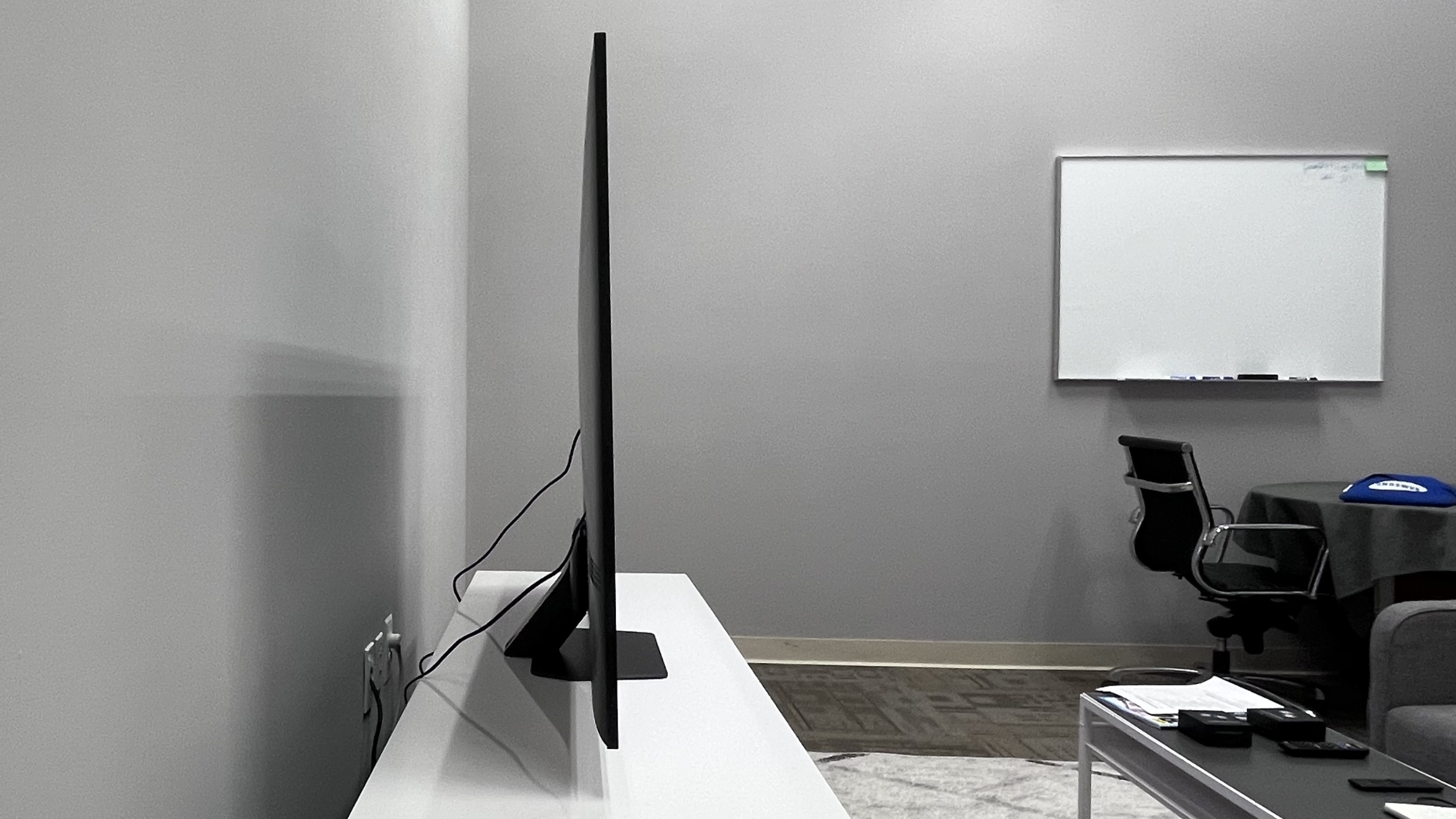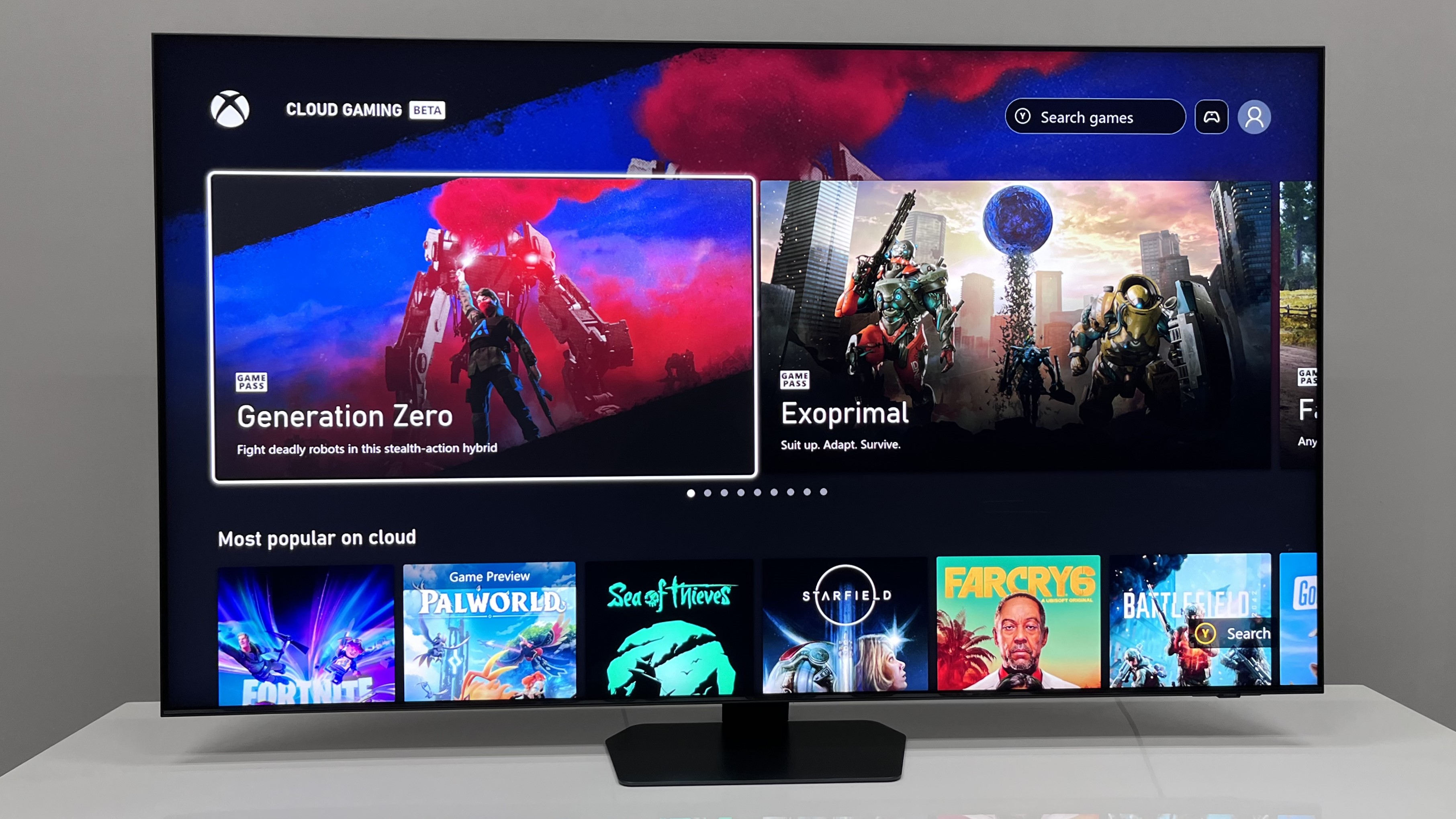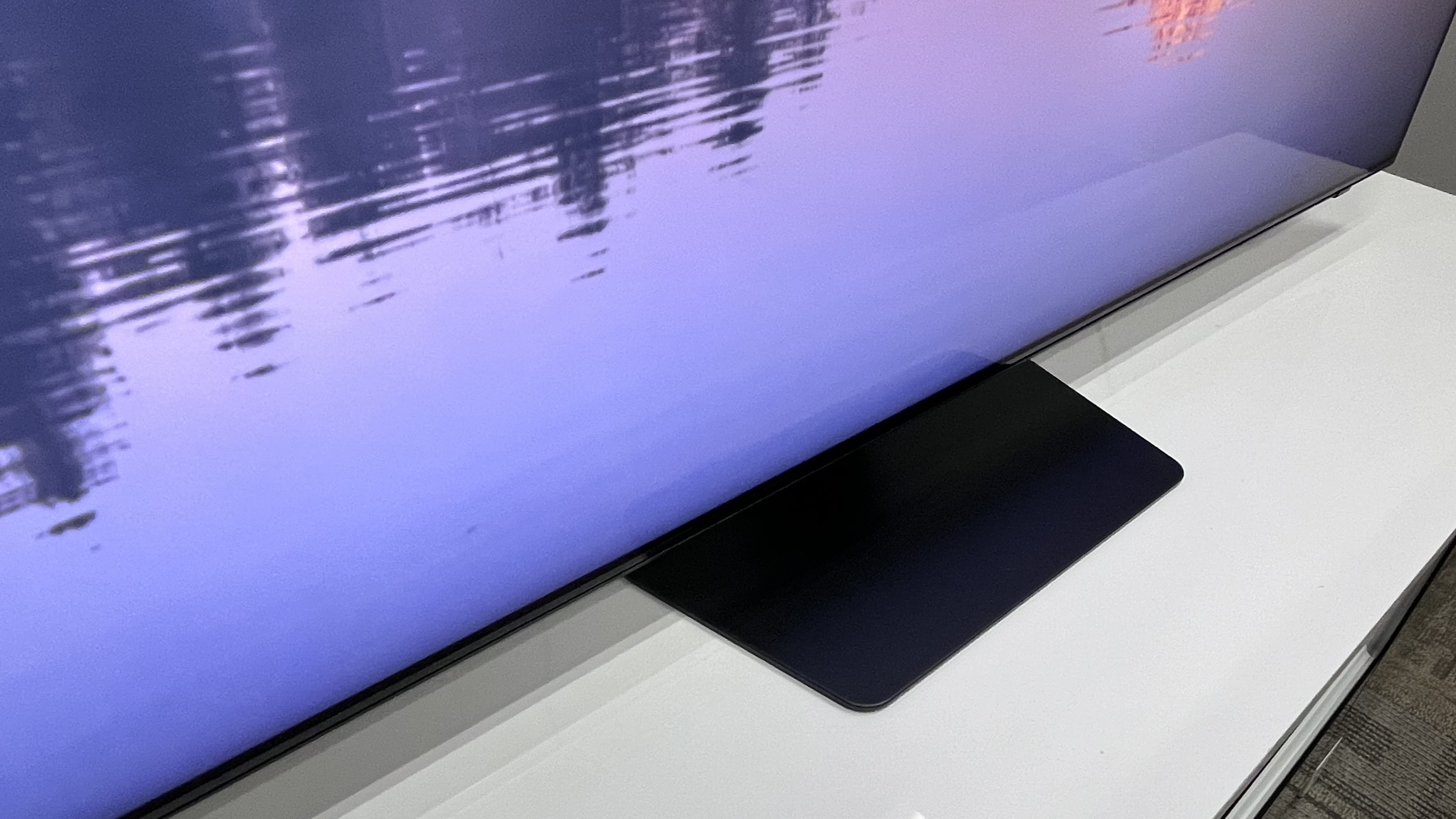
The Samsung QN90 series has long been celebrated as a showcase for the best mini-LED TVs, offering premium picture quality and advanced features for discerning viewers.
As one of the flagship series in Samsung's 2024 TV lineup, the Samsung QN90D balances cutting-edge tech with mainstream appeal. When introducing the QN90D, Samsung reaffirmed its commitment to pushing the boundaries of display tech, delivering exceptional brightness and contrast, alongside sophisticated smart features.
For 2025, we expect to see a significant evolution of Samsung's flagship mini-LED TVs in the Samsung QN90F series. Samsung hasn't officially announced the new QN90F series, but according to a recent leak, Samsung is jumping from a "D series" naming scheme for its 2024 products to an "F series," for 2025.
While the QN90D impressed with its overall quality, it wasn't without its shortcomings. Features like Dolby Vision support and off-axis viewing still left room for improvement compared to rival TVs.
With the 2025 iteration of the QN90 series set for release next year, expectations are high. Competitors like Sony have made significant strides in areas like HDR handling and backlight design, and Samsung faces the challenge of maintaining its edge in a rapidly evolving market.

Samsung QN90 series mini-LED TV: How good is the current QN90D?
The Samsung QN90D earned its reputation as one of the best 4K mini-LED TVs of 2024, offering impressive brightness and exceptional colour accuracy, particularly with HDR content.
Its Quantum Matrix tech provided precise light control and deeper black levels, while the Neo Quantum Processor further enhanced the experience by delivering smooth 4K upscaling and optimized performance for all types of content.
However, the QN90D was not without its drawbacks.
One of the most notable limitations was the lack of support for Dolby Vision, a popular HDR format widely adopted by streaming services and competing TV brands. This omission left Samsung trailing competitors like LG and Sony, which offer Dolby Vision alongside HDR10 and HDR10+ formats.
Additionally, while the QN90D excelled in contrast and brightness, off-axis viewing still lagged behind OLED alternatives. Colours and contrast would lose their vibrancy when viewed from sharp angles, making it less ideal for large gatherings or unconventional room setups.

Samsung QN90F series mini-LED TV: AI and smart features
As AI continues to evolve, it’s becoming a cornerstone of modern TVs.
Samsung has already made strides with its Neo Quantum Processor, which leverages AI for upscaling and real-time adjustments, but there’s still work to be done by the TV giant.
For the 2025 Samsung QN90F series, we’d love to see an upgraded AI processing engine capable of even more complex optimisations. Enhancing dynamic tone mapping to better adapt to scene-by-scene variations in brightness and color would elevate the viewing experience, particularly in HDR content.
AI-driven adjustments could also improve how the TV handles mixed lighting conditions, ensuring picture quality remains consistent regardless of the environment.
Gaming features are another area ripe for AI-powered enhancements. The QN90D already supports features like low input lag and Variable Refresh Rates (VRR), but integrating AI to dynamically optimise gaming settings would set the QN90 series apart.
For example, AI could automatically detect the genre of a game – whether it’s a fast-paced shooter or a visually stunning open-world adventure – and adjust settings like refresh rate, contrast, and motion smoothing for the best experience.
On the smart features front, a revamped UI that leverages AI to deliver more personalised content recommendations would be a welcome addition. While Samsung’s current Smart Hub is functional, it could benefit from deeper integration with user preferences.
For example, AI could analyse viewing habits to suggest not just individual shows but entire genres or streaming platforms tailored to the user’s interests.
Audio enhancements powered by AI would also make a significant impact. The QN90D already features Adaptive Sound+, which tailors audio to match the content, but future iterations could take this further by creating a more immersive spatial sound experience.
Additionally, an improved "Voice Clarity Mode", capable of isolating dialogue even in noisy environments, would ensure crisp, intelligible audio for everything from movies to news broadcasts. These advancements would make the QN90F series not just a visual powerhouse but an all-around sensory experience.

Samsung QN90 series mini-LED TV: Hardware upgrades
Don't get us wrong, the Samsung QN90D's hardware is already impressive, with its mini-LED backlighting offering deep contrast and vibrant brightness.
However, there’s always room for improvement, especially as competitors push the boundaries of display tech, and the 2025 QN90F series could further refine the control of mini-LED dimming zones.
By increasing the number of dimming zones and improving the precision of local dimming algorithms, Samsung could virtually eliminate blooming and deliver near-perfect black levels, rivaling OLED in contrast performance. This would enhance the overall cinematic experience, particularly in dark scenes where detail and contrast are crucial.
Brightness has long been a strength of Samsung’s mini-LED TVs, but the 2025 QN90F series could take it a step further by achieving even higher peak brightness levels. Competing models from Sony, TCL, and Hisense have made significant strides in HDR brightness, and Samsung needs to stay ahead in this area to maintain its edge.
Enhanced brightness would not only make HDR content pop but also improve performance in well-lit environments, ensuring vibrant visuals in any lighting condition. Paired with Samsung’s Quantum Dot tech, this improvement would solidify the QN90F series as the go-to choice for stunning picture quality.
One of the most noticeable drawbacks of the QN90D is its limited off-axis viewing performance. While mini-LED provides excellent brightness and contrast head-on, colors and contrast diminish when viewed from an angle.
For the 2025 QN90F series, Samsung could introduce advanced off-axis viewing tech to address this issue. A potential solution could involve using specialized anti-reflective coatings or new panel designs that maintain color accuracy and contrast at wider angles.
Finally, Dolby Vision support remains one of the most requested features among Samsung TV users. The QN90D’s reliance on HDR10+ is a limitation when competing brands offer both HDR10+ and Dolby Vision, which has become a standard for streaming services and 4K Blu-ray content.
- The best TV, chosen by our reviewers for all budgets
- The best OLED TV: stunning sets from LG, Sony and Samsung
- The best Samsung TV: our top Samsung QLED, Neo QLED, and 8K picks







